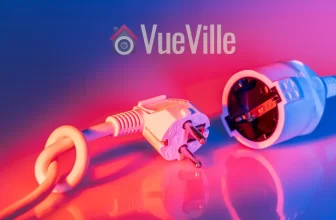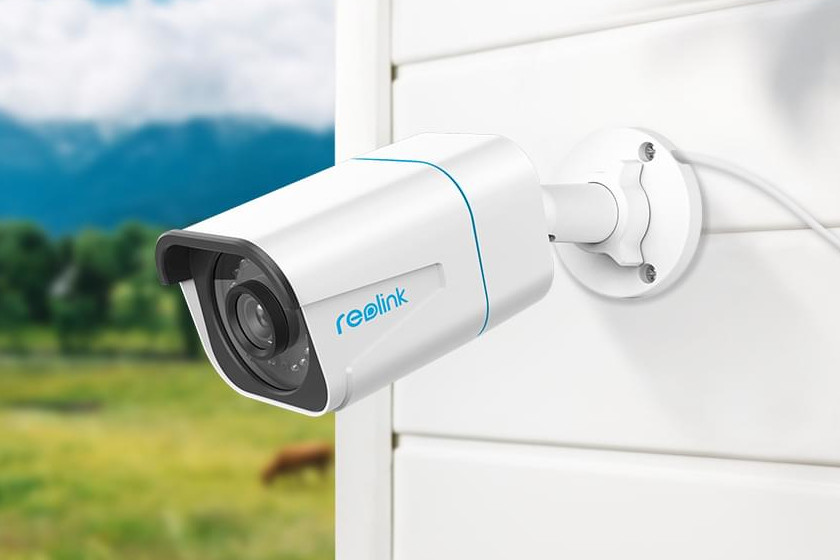If you have outdoor security cameras with night vision, you must have come across this pesky problem. Lovely, beautiful (yeah, right) spider webs right in front of your cameras lens obscuring the whole view! Add in a little breeze and you have the perfect storm – spider webs setting off false motion detection alerts and filling your inbox with email alerts.
[toc]

What attracts spiders to security cameras?
Its the flying insects. Get rid of the insects and you get rid of the spiders. Let me explain.
Contrary to popular opinion, most web-spinning spiders are actually blind.((http://www.spiders.us/faq/how-many-eyes-do-spiders-have/)) They cannot sense the Infrared LEDs.
I have been running CCTV cameras at my home since 2014 and my constant challenge has been to keep the blasted spiders and their webs away. The main reason these critters are attracted to the cameras are because of the abundance of food. Yup food, tasty flying food. So its not the spiders that are attracted to the camera’s IR lamps, but the flying insects they feed on.
It is thought that some flying insects are sensitive to infrared light and get attracted to the camera’s IR LEDs. Now these spiders are not dumb. So even though they don’t even know that there is InfraRed on the camera, they do know that they can get lots of food easily. So that’s where the web gets built.
So what’s the solution?
Now that we know why it happens, we can look at how to solve the problem of spider webs. We either need to keep the flying insects away or prevent the spiders from building their webs regardless of the flying insects.
The permanent solution – Disable the on-board IR LEDs and use external IR lamps
This method has worked very well for me. By moving the source of IR light away from the camera, the flying insects and hence the spiders move base from the camera lens to the external IR lamp.
Most IP cameras will let you disable the on-board IR. If your cameras don’t, its time to consider new security cameras.
Pro tip: Put the external IR lamp inside your house shining its beam of light through a window and you get the ultimate revenge – they can see it but they can’t get to it!
There are different types of IR LED lamps. Expanding upon my comments on a related /r/HomeDefense post, there are two types of Infrared lamps – the more common type where the IR LEDs are arranged in a ring, and the less common but brighter longer-lasting EXIR LEDs. Just like you can find cameras with either type of LEDs, you can find IR lamps with either type of LED:
- Standard IR LED lamp – These are the ones I use because they are cheap and surprisingly durable. The downside is the narrow beam angle of 60 deg or so. I don’t think they are weather-proof but I use them inside through a window. I have not had any noticeable fading or dimming after 1 year of use, which is the most common complaint about these LEDs.

- EXIR IR LED lamp – Now I haven’t tried these but they have a wider beam angle of 90 degrees and are IP65 weather-rated.

The “do it once in two weeks” solution – Use bug sprays or insect repellents
I tried many different bug sprays from many different brands before finally finding something that would keep the nosy spiders and their webs at bay:

Make life difficult for spiders – use a lubricant
This is a method I came across on Reddit and seems to have helped some folks. Basically you are making the camera housing and the area surrounding the camera slippery so that the spider can’t even spin its web.

Is there anything else I can do?
If false motion detection alerts are the problem, you can try and use Intrusion detection or dwell detection instead of simple motion detection. This way an alert is set off only when something of a certain size and larger is in the scene for a certain period (say, 1 second). See how you can do this with Hikvision cameras.
This is a useful thing to do in any case and could be combined with the methods described above.
So what have you found to be the most effective way to deal with spider webs in front of your camera lens?
A quick note: This article contains affiliate links from Amazon. I don’t like ads and I’m sure you don’t either. So this is how we pay the bills and ensure a distraction-free experience for you, my dear reader. If you click on one of these links and then purchase something from Amazon, I will receive affiliate income for referring you to Amazon. This goes towards the costs of hosting and running this website and does not affect you in any way. Thanks for your understanding!








Excellent article. What are the links for the bug sprays and the lubricant.
Sorry I have fixed the links now.
Hanging a bag of moth balls behind the camera seems to work.
Better view when the cobwebs are all cleared out. Thanks for this information.
I just shoot some canned air at my cameras when the webs start to show up.